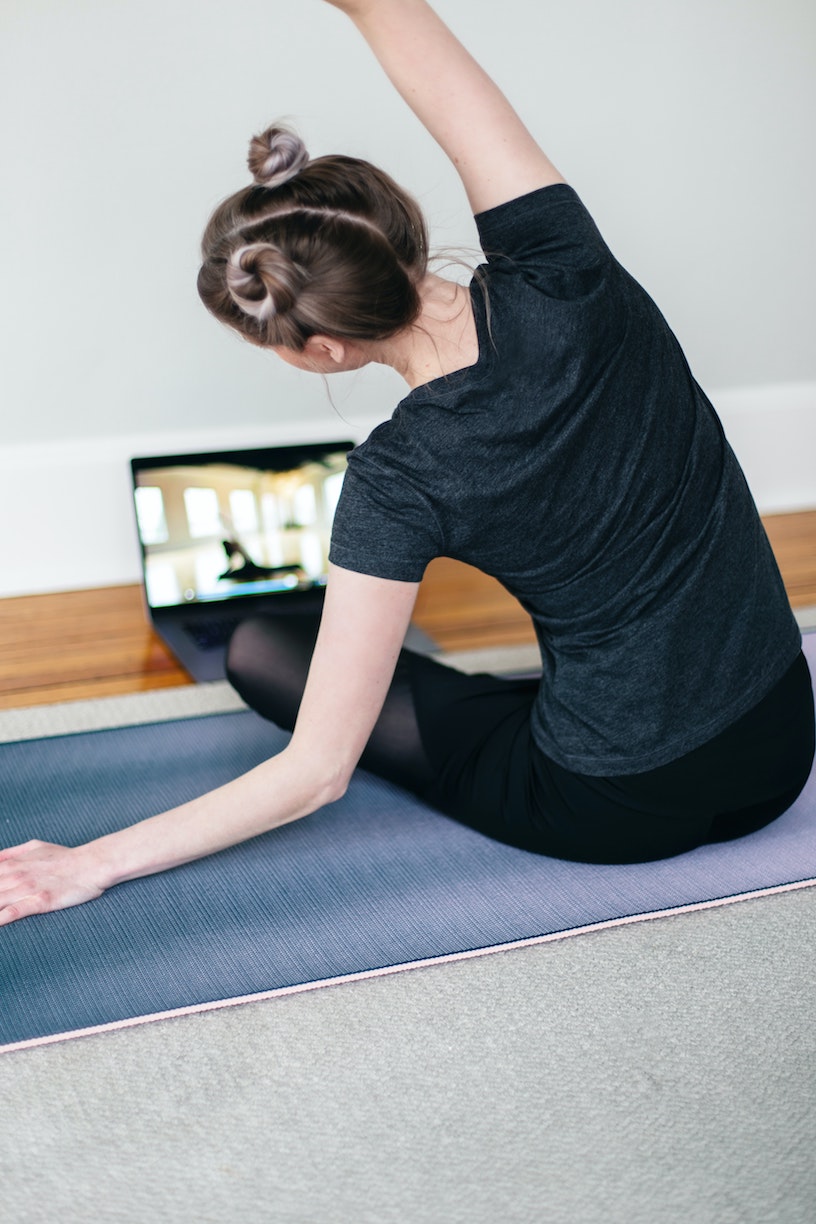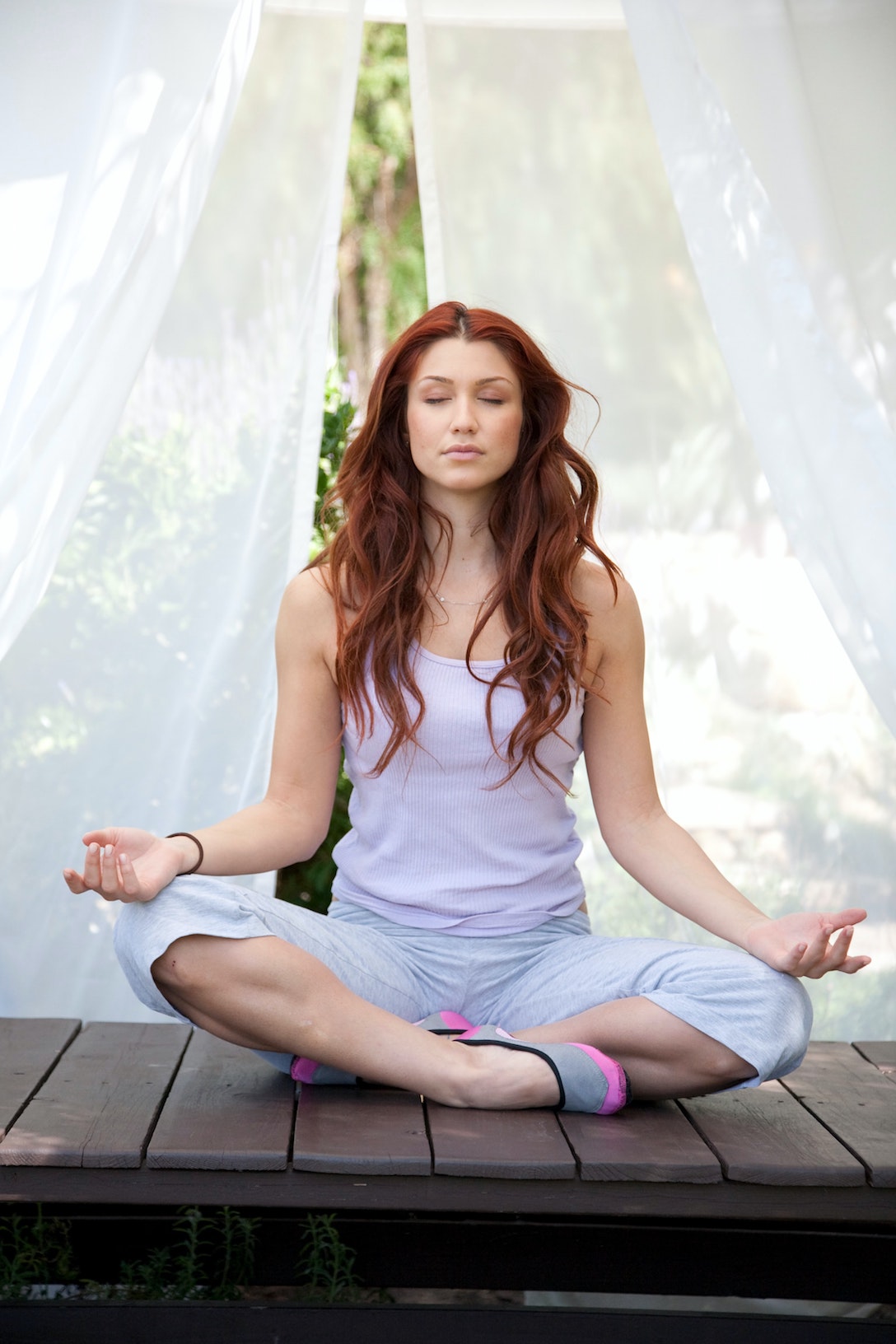
Whether you practise yoga and run or just run, you can apply Patanjali’s Yamas and Niyamas to running.
The Yamas and Niyamas are often seen as ‘right living’. The word ‘Niyama’ often translates as ‘positive duties’ or ‘observances’, and are thought of as recommended habits for healthy living and ‘spiritual existence’. They’re traditionally thought of as practices concerned with ourselves, although of course we can think of them as affecting the outside world too. We can take them as a guide of how to act towards ourselves too.
There are five Yamas and five Niyamas listed in Patanjali’s Sutras: Ahimsa, Satya, Asteya, Brahmacharya, Aparigraha, Saucha, Santosha, Tapas, Svadhyaya, and, Isvara Pranidhana.
So let’s go forth and apply these to running.
- Ahimsa (non-harming or non-violence): We can all feel frustrated when our fitness, our running, doesn’t progress as quickly as we’d like. Remembering Ahimsa throughout our training guides us to let go of thinking negatively about our body; accepting ourselves completely – no matter how strong or fast we are at this moment. Non-violence in the physical sense here means we don’t push ourselves over the edge; of course we challenge ourselves in order to grow, leaning in to that sometimes scary edge, but never pushing ourselves to the point of harm. By respecting our boundaries and listening to our bodies, our training becomes sustainable and a way to really learn about ourselves. When we let go of clinging to the expectations of what we ‘should’ be able to do, and stop scolding ourselves with harmful thoughts, our body responds by working with us, not against us. We can open to the fact that the body is a pathway to freedom, not a road-block!
- Satya (truthfulness): How many times have you ignored or pushed past an injury or limitation? It’s this dishonesty with ourselves that can often cause physical pain. Running is here to serve our bodies and minds, not harm our joints and ligaments – so each time we run it’s important to have complete honesty with what we actually need in that very moment. On a physical and emotional level, we change all the time, so fixating upon one way of training isn’t always going to work out. When we can get the ego-mind out of the way (you know, the one that tells us we should be able to run faster, or longer) this offers us a way to see past our conditioned, ever-changing and un-true ways of thinking, and uncover a more pure and beneficial way of treating ourselves on all levels.
- Asteya (non-stealing): The moment we feel a sense of ‘lack’ in life; desire, want and greed arises. We begin to look for something to fill that ‘empty’ sensation, and often feel as though everyone else has what we want. Lack, insecurity, wanting, feeling incomplete, essentially it all boils down to feeling like there’s something missing. We already are enough within ourselves. Do you push yourself beyond healthy boundaries in your training because you’re afraid of not being good enough? Even subconsciously, there’s usually a little part of us that starts out with the best of intentions, but then about half-way through a run, begins to tempt us towards pushing, instead of focusing on how it feels. When we continually focus on pushing ourselves just a little too far over that edge, we rob ourselves of being able to be present with ourselves for exactly the way things are in that moment. Whenever those feelings of lack, want or desire arise, practise using the mantra ‘I am enough’ and see how it affects your life.
- Brahmacharya (right use of energy): Brahmacharya leads us to consider how we actually use and direct our energy. Brahmacharya also evokes a sense of directing our energy away from external desires, you know, those pleasures which seem great at the time but are ultimately fleeting, and instead, towards finding peace and happiness within ourselves. Consider for a moment where your energy is most directed. A lot of our energy may also be spent on trying to present ourselves as someone we’re not in order to please or impress others, or maybe we direct our physical energy towards endlessly pushing ourselves to be fitter, stronger or skinnier. In order to be the best version of ourselves and to use our energy in the right way, we need first of all to listen to what our bodies need. By becoming aware of our energy levels and really listening to what we need, we can take action to ensure we feel at our very best. You may notice that if you’re feeling down, nothing helps more than going for a run – and happiness is actually a proven immune-booster too! To make the most of our energy, we can enhance our health and well-being with the right movement for us at that time; if you’re accustomed to running even if you’re tired or sore, maybe your body needs restoring, allow some time for a yoga class. If you always run on the road, maybe hit the trails. Your body is always talking to you; listen and see what it has to say. Think about where you’re directing your energy – is it helpful or hurtful?
- Aparigraha (non-greed or non-hoarding): It’s not the destination, it’s the journey. Let your concern be with action alone, and never with the fruits of action. Do not let the results of action be your motive. We should never concern ourselves with the outcome, we should only concern ourselves with what we’re actually doing right now as we work towards that outcome. So often we worry if we’ll be successful enough, or ‘good enough’ when we put our hearts on the line to show the world what we’re made of, that we forget why we started in the first place. Progress is encouraging, but it doesn’t need to be the only reward. The sheer joy of running is the greatest reward in itself. Realizing how freeing it is not to have a specific goal we must achieve, but to simply move our bodies, feels good. If we run for the love of running, without forcing or pushing ourselves beyond our edge, the body will unfold naturally.
- Saucha (cleanliness in body and mind): Keeping running clothes, shoes and accessories washed, in good condition and easily accessible is a good idea. Eating healthily and organically is considered ‘cleanest’ for us. If foods contain lots of preservatives, additives, and pesticides, our bodies have to work hard to detoxify and eliminate these unnatural chemicals before even being able to absorb the goodness from what we eat and drink. Remember that ‘you are what you eat’, so the cleaner our food is, the cleaner we’re going to be inside and out. It’s just about having awareness of what we’re consuming, and making conscious choices to enable us to live healthier and happier. Our minds are very powerful, and what we choose to do with them has the ability to make a big impact. An ‘impure’ thought might come in the form of judging yourself for not achieving a goal. You are also what you think.
- Santosha (contentment): Whether its losing weight, getting a PR, or qualifying for Boston, there’s that niggling thought of “I’d be happier if” …in our minds. Now having the urge to want to grow and expand our minds and push ourselves just a little towards a goal isn’t a bad thing at all – it just becomes bad when we base our entire sense of peace and happiness upon this. Santosha or ‘contentment’ doesn’t mean idly sitting back and relinquishing the need to do anything. It simply means accepting and appreciating what we have and what we are already, and moving forwards from there. This is a difficult practice indeed; it is in our nature to want more, to not let ourselves rest until we’ve satisfied some temporary urge. But we do have to consider what goals are really important to our life, our world and our wellbeing, not to look outside of ourselves for happiness, but to realize that peace and happiness lies within. There will always be further to go and more to explore. The good news is, we have a lifetime to run. Constantly chasing after a feeling, a physical possession, or a person can become exhausting after a while. Yes, of course we’ll experience temporary joy or happiness once we’ve conquered what we wanted, but how long does it really last? Once we’ve reached that place of temporary peace, we ultimately become very attached to this feeling, and fight to keep hold of it, eventually leading to sadness again until we find that next goal to make us ‘happy’. We have a habit of waiting to ‘be ourselves’ until we’ve accomplished this never-ending to-do list of things that will make us ‘better’.
- Tapas (discipline, burning enthusiasm): Tapas can mean cultivating a sense of self-discipline, passion and courage in order to burn away ‘impurities’ physically, mentally and emotionally, and paving the way to our true greatness. Tapas doesn’t have to mean being solemn and serious though, this fieriness is what gets our heart pumping, heightens our desire for personal growth and reminds us of how much we love running! First of all, ‘discipline’ doesn’t strictly mean pushing ourselves harder in a physical sense. Sometimes just getting out the door for a 10 minute run is difficult enough! For some, it’ll mean working on strength. Tapas is an aspect of the inner wisdom that encourages us to run even when we don’t feel like it, even though we know how good it makes us feel! Making the decision to go to bed a little earlier so you can wake up early to run is Tapas; not drinking too much or eating unhealthy foods because you want to feel good in your training is Tapas; ‘burning’ away the negative thought patterns and habits we often fall in to, is Tapas. Working with core strength is a surefire way to tap into that sense of ‘fieriness’ stoking the ‘agni’ or inner fire. The core is where our Manipura Chakra lies, and this energy centre governs our sense of self-confidence, inner strength, willpower and self-discipline.
- Svadhyaya (study of the self and of the texts): It’s probably fair to say that the more we realize what we are not, the closer we come to realizing who or what we truly are. By studying ‘the self’ and recognizing our habits and thought processes, we realize how much of what we do and think is far from who we really know we are. The small self judges, criticizes, fears, conditions, and, doubts. By paying attention to, or ‘studying’ our ‘self’, we become more aware of the things we do that harm us, and also those which serve us and bring us closer to the true Self. By deepening our own knowledge and understanding of running by continuing to read, research, be curious about it, we cultivate our own practice of svadhyaya. While yes, reading about running and all its different aspects is beneficial, it doesn’t make very much difference unless we reflect upon it. When reading something about running, we can meditate upon how it resonates with us, whether it bears any resemblance to our own experiences, and therefore apply it to our own lives. Having a lot of books and information is one thing, but fully understanding and living what we learn allows our running to become more a part of our lives. The way in which we train is actually very reflective of the way we practise life. When we’re hitting the pavement or the trails, there’s nowhere else to hide. The daily distractions of phones, chores, emails, and TV are no longer there to take our minds away from ourselves. We actually have to pay attention. This can be a little intimidating at first, and running can sometimes reveal more about where our problems are rather than how perfect we are – which as we know, is very good for destroying the ego.
- Isvara Pranidhana (surrender to a higher self): We’re advised to ‘surrender’ to this Supreme Being or higher self, which in essence means cultivating a deep and trusting relationship with the universe, and making each action an offering to something bigger than us. There is an underlying idea that something bigger, more profound and pure exists other than ourselves – we simply let go, devote everything to a higher power and completely devote our actions to whatever we consider that higher power to be. It’s the end of a long day, and you’ve laced up your shoes ready to head out the door for your run, when you know deep down that your body could have really benefitted from a yoga class. Halfway through your run, you notice your body really needs to rest, but there’s a little voice in the mind that says ‘keep going, don’t be weak’. If we continue to push past our edge – instead of leaning into it – our training is no longer serving our bodies, and isn’t sustainable. Knowing when we need to rest shows a huge amount of understanding of ourselves, respect for our bodies, and allows our practice to support us for a lifetime. The practice of surrendering here requires us to acknowledge that we can do our very best in each situation, but we can’t really do any more than that; realizing this essentially allows us to fully engage and be present in what we’re doing, bringing all our energy to that moment and experiencing it fully just for what it is. Whether it’s surrendering to a moment of difficulty or a moment of joy, surrendering the results of our actions, or simply learning to trust in the universe a little more; each time we do choose to surrender, we move closer to freedom.
If we are to really benefit from running, it has to expand beyond paces and finishing times. When this happens, it’s not just our bodies that get strengthened, but our minds and hearts as well. From that state of being, we move ever closer towards wholeness, connectedness and unity, and start to not just run, but live and breathe it in each and every moment.
 Comparisons are a form of violence. When you believe you are not good enough, you will compare yourself to others.
Comparisons are a form of violence. When you believe you are not good enough, you will compare yourself to others.
 We need water to live. All our cells soak in it, though some tissues (such as muscle) have a higher water content than others (such as body fat).
We need water to live. All our cells soak in it, though some tissues (such as muscle) have a higher water content than others (such as body fat). “When women get together as a group, it is immensely powerful,” Annie Lennox.
“When women get together as a group, it is immensely powerful,” Annie Lennox.




